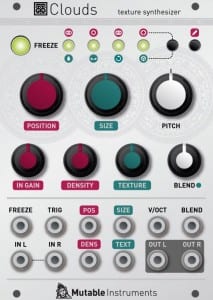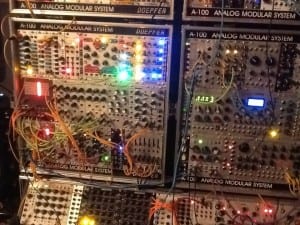One thing about composition is that it’s a craft but it’s also a intellectual experience on the part of the producer. For example the painter takes pride in their paint and brushes but its more than that. Talking to visual artist Tim Shelbourne (mentioned in a previous post) who works with a digital pallet; he sees the exploration of that pallet as a way to improve the impact of his art and is as a key aspect of the process. Indeed there is much debate in the visual community about the validity of digital over the “real”. This debate causes some anguish but it’s an important one to have as it’s through that debate that the art and credibility of that artistic technique is established. Tim is not lazy or using a computer to do the work for him, he is pioneering a new paradigm. He is not a traitor to the mystical world of the traditional artist, no one owns the art!
Why do I mention this? Because it’s a debate which is quite strange to the audio artist. I don’t pick up much snobbery with the use of analog methods in audio over the digital platform. OK when I used tape it was harder but that didn’t make the art better. You will occasionally find me in a room with other “Old hands” reminiscing about razor blades and yellow leader, trying to recover lost edits from the mass of discarded recordings on the floor. “They don’t know they are born now!” but really we are not dismissing the new techniques we are envious and wish we had the artistic opportunities back in the 19……. err it was a while ago in the last century.
But, and this is the rub, we haven’t moved totally away from our past in more ways than you think. I have posted a number of pictures of Steve’s Cubase Desktop.. this is a reminder. Its a computer representation of an analog world! Its got knobs and buttons to press. The reason for this I will let you ponder on. 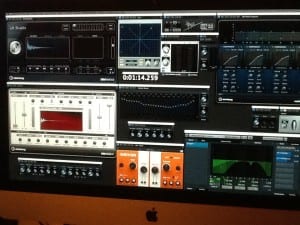 Is it because Steve it old! (sorry mate) or is their something about this kind of layout which we just find easy to understand and work with?
Is it because Steve it old! (sorry mate) or is their something about this kind of layout which we just find easy to understand and work with?
From my point of view some of these GUIs just look great. I love the lights and the layout. I love exploring the buttons and combinations and I can do it all without a lot of messy wire! I invite debate about that point. If I have a physical wire and I plug it into a physical hole I know what’s going on. If that’s virtual and it doesn’t work there could be all sorts of computer stuff going on in the background which I don’t understand. If Tim the painter gets a “poor” result in the physical process he only has himself to blaim. If this happens in the digital there are magical things happening which he doesn’t understand! Almost the view of the ancients where an artist would be partially in the hands of a mystical force.
Lets go back to what things look like…. this just looks good. It’s a GUI but it’s also a physical artifact.
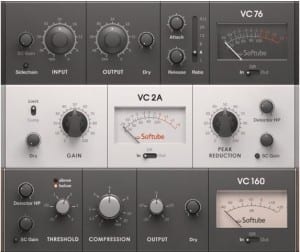 This exists in the digital and analog environments, you can use this as a piece of kit which you can hold and also its been recreated as a digital mirror. Some things are just designed “right.
This exists in the digital and analog environments, you can use this as a piece of kit which you can hold and also its been recreated as a digital mirror. Some things are just designed “right.
Speaking to broadcaster Dave Bussey about the design of audio desks we both agreed we prefered the analog meter to the digital.
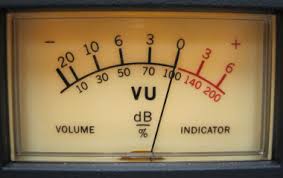 Why? Perhaps because we have been brought up with the analog but it could be a inherent design issue.
Why? Perhaps because we have been brought up with the analog but it could be a inherent design issue.
Finally, if we get to the root of this and think about the way in which the artist takes joy in the production and the tools of the trade have a look at this site
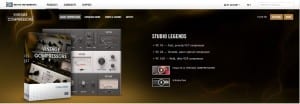 which has some interesting material about the technical use of compression but also about the place of the producer within the creative process and the post production equipment being as much a part of the process as the original instrument.
which has some interesting material about the technical use of compression but also about the place of the producer within the creative process and the post production equipment being as much a part of the process as the original instrument.
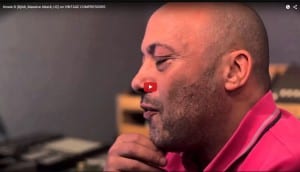
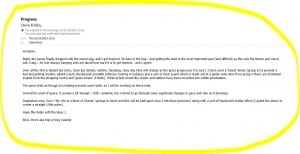
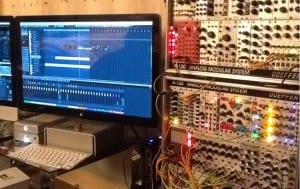 of expensive looking guitars which are a little dusty. What does this tell me? That this is someone who once worked in the analogue but has moved at some point to the digital; however he will still retain the skills and feel that came with the playing of those tools.
of expensive looking guitars which are a little dusty. What does this tell me? That this is someone who once worked in the analogue but has moved at some point to the digital; however he will still retain the skills and feel that came with the playing of those tools.